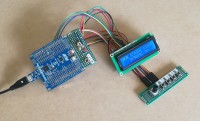AVR Embedded C Tutorial

For novices: yet another Embedded C Programming Tutorial based on 8-bit AVR micro-controllers, using Microchip/Atmel Studio (not Arduino IDE).
Here is a self-study tutorial intended as a first course in embedded micro-controller programming using a sub-set of the C language called “C-less” (C language essentials). “C-less” was conceived to provide enough of C to develop “real-world” applications, while avoiding unnecessary complex constructs which novices might find overwhelming.
The software development environment (PC application) used in this tutorial is Microchip/Atmel Studio IDE. This is a free download from Microchip's website. Don't be intimidated by Atmel Studio. Although it is a far more professional IDE than Arduino, it is not much more difficult to learn.
Coding examples and exercises are targeted towards Atmel 8-bit AVR micro-controller devices, specifically the ATmega328P, as fitted on the author’s “AVR-BED / Nano" and Microchip "AVR X-mini" boards. Arduino Uno and Nano boards are also supported. Appendix A of the tutorial describes various options for a suitable hardware platform.
Many of the program examples in this tutorial use a pre-built function library to facilitate access to peripheral devices such as displays, timers, push-buttons, analogue inputs, UARTs, etc. This approach avoids the need for a detailed understanding of peripheral driver code in the early stages of learning when the focus is on C language syntax.
Prerequisite Knowledge & Skills:
The course assumes a rudimentary knowledge of Boolean logic and binary arithmetic. Practical skills in digital electronic circuits and systems incorporating micro-controllers, peripheral devices, etc, will be beneficial to learning embedded programming.
The software development environment (PC application) used in this tutorial is Microchip/Atmel Studio IDE. This is a free download from Microchip's website. Don't be intimidated by Atmel Studio. Although it is a far more professional IDE than Arduino, it is not much more difficult to learn.
Coding examples and exercises are targeted towards Atmel 8-bit AVR micro-controller devices, specifically the ATmega328P, as fitted on the author’s “AVR-BED / Nano" and Microchip "AVR X-mini" boards. Arduino Uno and Nano boards are also supported. Appendix A of the tutorial describes various options for a suitable hardware platform.
Many of the program examples in this tutorial use a pre-built function library to facilitate access to peripheral devices such as displays, timers, push-buttons, analogue inputs, UARTs, etc. This approach avoids the need for a detailed understanding of peripheral driver code in the early stages of learning when the focus is on C language syntax.
Prerequisite Knowledge & Skills:
The course assumes a rudimentary knowledge of Boolean logic and binary arithmetic. Practical skills in digital electronic circuits and systems incorporating micro-controllers, peripheral devices, etc, will be beneficial to learning embedded programming.



Mises à jour de l'auteur